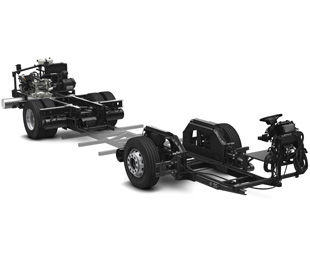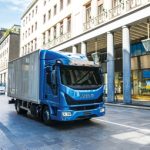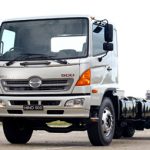Brazilian real bucks the rand’s trend

FRANK BEETON updates us on important bus news from Brazil
The foreign exchange value of the rand is a regular topic of conversation at many dinner table gatherings around South Africa. Recent events have seen the rand losing ground against the United States dollar, as well as the euro, Chinese yuan and Japanese yen – leading to a general perception that the local currency is going backwards.
However, there is one very significant exception to this trend, that being the Brazilian real. Whereas, in January 2014, one real would have been worth R4,55, in October 2015 its exchange value had reduced to R3,46.
Brazil is an important source of bus and coach chassis and bodies, and, to a lesser extent, truck products to South Africa; so this currency movement would have been highly beneficial to local importers.
If this trend continues, Brazil could gain considerable ground as an exporter of commercial vehicles. The following items of interest relating to bus products out of Brazil have recently been published in the global media:
• MAN Latin America recently launched its Volksbus 18.280 T low-entry Euro-5 bus chassis, to comply with new legislation, where low-floor buses are required for future operation in São Paulo city.
This chassis is powered by a rear-mounted 204 kW (280 hp) MAN D08 EGR six-cylinder engine, driving through either a Voith Diwa 5 or ZF Ecolife fully automatic transmission, and is equipped with kneeling full-air suspension.
• Another new model is the steel-suspended 17,3-t GVM Volksbus 17.230 OD front-engined ladder-frame bus chassis, with set-back front axle. It is powered by a four-cylinder MAN D0834 engine coupled to a six-speed ZF synchromesh transmission.
• Globally active Brazilian bodybuilder and bus manufacturer Marcopolo, which has been in business for 66 years, recently celebrated production of its 400 000th vehicle. The landmark product was a Paradiso 1350 Generation 7 three-axle, medium/long-distance coach. It features new seats, greater luggage capacity, new interior lining, reading lights and toilet.
• Brazilian bus manufacturers are actively exploring opportunities for alternative driveline buses.
Mercedes-Benz is jointly developing a dual hybrid-drive articulated bus with local company Eletra. This vehicle can operate as a trolleybus using overhead electrical power supply, or by using its diesel engine and regenerative braking to charge on-board batteries. This project is based on a 23-m Mercedes-Benz O 500 UDA underframe with four steering axles.
At the other end of the scale, Iveco has started local testing of its Daily Electric Minibus, a seven-metre, 19-passenger unit powered by an 80 kW MES-DEA electric motor. It is capable of 70 km/h maximum speed when loaded, and has a range of between 90 and 130 km on a single battery charge.
We believe that it will be prudent to keep a watchful eye on the Brazilian bus industry in the future, in order to monitor its progress in becoming an even more significant player in the global market.
Published by
Focus on Transport
focusmagsa




